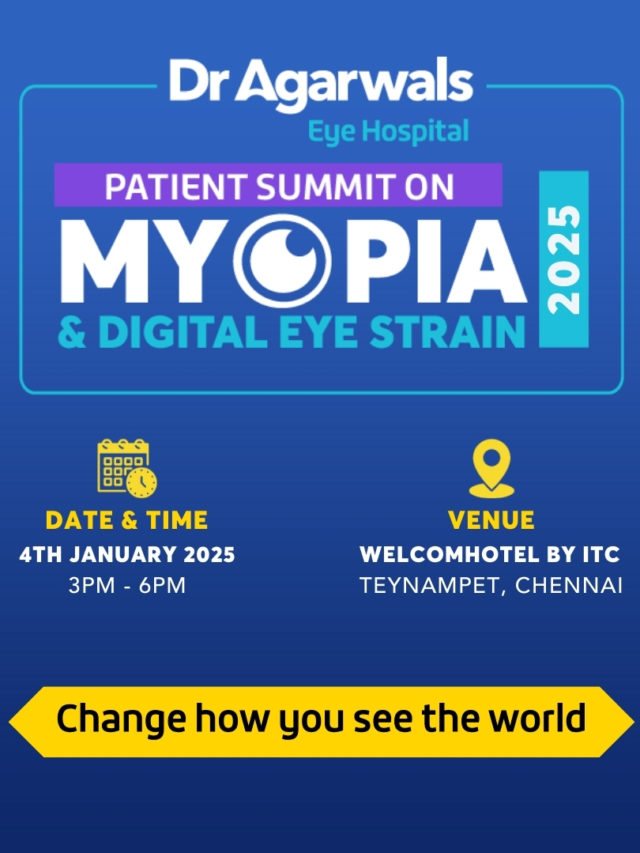Do you experience headaches, nausea, or vomiting? The individuals experiencing these symptoms may be suffering from papilledema. It is a condition of the optic nerve that occurs due to swelling of optic discs. This happens as a result of increased intracranial pressure (intracranial hypertension). The condition signifies underlying health concerns and requires attention at different stages for effective management.
Papilledema stages are usually observed in people aged between 22 and 44 years with a body mass index (BMI) of more than 25. So, we have curated this comprehensive guide to help you understand papilledema symptoms, causes, its stages, and treatment.
What is Papilledema?
Papilloedema or Papilledema means swelling of the optic disc, the area where the optic nerve enters the back of the eye, due to raised pressure inside the skull. This pressure may result from serious underlying conditions such as brain tumours, haemorrhages, or idiopathic intracranial hypertension. While papilledema is not a disease itself, it is a clinical sign that requires prompt medical attention, as delayed diagnosis can lead to progressive and potentially permanent vision loss.
Who Is Most Likely to Be Affected by Papilledema?
Papilledema can affect individuals of any age, but it is more frequently seen in adults with conditions that increase pressure inside the skull. People with obesity, certain hormonal imbalances, or those taking specific medications (e.g., tetracyclines or excess vitamin A) may be at higher risk. Women of childbearing age, particularly those with idiopathic intracranial hypertension, are also more commonly affected.
Symptoms of Papilledema
Papilledema symptoms often reflect both visual and neurological disturbances. The condition may be asymptomatic in early stages, but typically progresses with the following signs:
Headaches
Persistent or worsening headache, particularly those that are worse upon waking or aggravated by coughing or straining, are among the most common early signs of raised intracranial pressure leading to papilledema.
Double Vision
Some individuals with papilledema may experience double vision (diplopia), especially when eye movement is affected due to pressure on the cranial nerves, most often the sixth cranial nerve.
Transient visual obscurations
These are brief episodes of blurred or darkened vision lasting a few seconds, often triggered by changes in posture, such as standing up quickly. They are a hallmark feature of early papilledema.
Neurological symptoms
In severe or prolonged cases, papilledema may be accompanied by more general neurological symptoms. These can include difficulties with coordination, memory, concentration, or changes in mental status, indicating pressure affecting broader areas of the brain.
Papilledema Treatment Approaches from Experts
Effective management of papilledema involves identifying and treating the underlying cause of raised intracranial pressure. Treatment plans may include:
- Medication: Diuretics like acetazolamide are often prescribed to reduce cerebrospinal fluid production and relieve pressure.
- Weight Management: In idiopathic intracranial hypertension, weight loss has shown positive outcomes in reducing papilledema.
- Surgical Intervention: In cases involving tumours, hydrocephalus, or non-resolving intracranial pressure, procedures like ventriculoperitoneal shunt placement or optic nerve sheath fenestration may be necessary.
- Ongoing Monitoring: Regular visual field testing and optic nerve imaging are crucial for assessing progression and response to treatment.
Management is typically carried out in conjunction with a neurologist or neurosurgeon, particularly in complex cases.
Causes of Papilledema
Papilledema primarily arises due to increased intracranial pressure (ICP). This heightened pressure can result from various conditions, such as:
Brain Tumours or Lesions: Growth or abnormalities in the brain can elevate pressure within the skull, leading to papilledema.
-
Cerebral Edema:
Swelling in the brain due to trauma, infections, or certain medical conditions contributes to increased pressure.
-
Meningitis:
Inflammation of the protective membranes covering the brain and spinal cord can elevate intracranial pressure.
-
Hypertension:
Uncontrolled high blood pressure can impact blood flow to the brain, potentially causing this condition.
Different Papilledema Stages
If your doctor evaluates your eye condition, you may have to go through the following papilledema stages:
Stage 1: Early Signs
In the initial papilledema stages, it might develop subtly, with mild optic disc swelling. Individuals may experience headaches, visual disturbances, or blurred vision. These papilledema symptoms often go unnoticed, making regular eye check-ups crucial for early detection.
Stage 2: Moderate Symptoms
Advancing to the next stage, papilledema shows more evident optic disc swelling. Vision impairment becomes more pronounced, with increased pressure impacting the optic nerve. You may observe blind spots or diminished peripheral vision.
Stage 3: Advanced Stage
At this stage, papilledema exhibits severe optic disc swelling, causing a notable decline in vision. Individuals might encounter significant visual disturbances, including tunnel vision or even complete loss of sight in severe cases. Urgent intervention becomes imperative to prevent irreversible vision loss.
Papilledema Treatment Approaches from Experts
Managing papilledema symptoms addresses its underlying cause and alleviates intracranial pressure. Papilledema treatment options for papilledema stages include:
-
Medication:
In this condition, diuretics or medications to reduce cerebral edema might be prescribed to mitigate intracranial pressure.
-
Surgery:
In cases where a tumour or lesion induced papilledema, surgical intervention to alleviate the pressure may be necessary as the best papilledema treatment.
-
Lifestyle Modifications:
Lifestyle changes like dietary adjustments or managing conditions like hypertension can aid in reducing intracranial pressure. This can be effective for papilledema treatment.
Prevention Strategies for Different Papilledema Stages
While certain causes of papilledema may be unavoidable, adopting preventive measures can mitigate risks:
-
Regular Check-ups:
Routine eye examinations and overall health check-ups can help detect it for timely intervention.
-
Manage Underlying Conditions:
Effectively managing conditions like hypertension or infections can lower the risk of increased intracranial pressure.
-
Healthy Lifestyle:
A balanced diet, regular exercise, and stress management contribute to overall well-being, potentially reducing the risk of conditions leading to papilledema.
Papilledema, with its varying stages and potential implications on vision, underscores the importance of proactive healthcare. Timely detection, understanding its causes, and prompt intervention are important for managing this condition effectively. If you prioritise regular health check-ups, adopt a healthy lifestyle, and keep your doctor informed about your health condition, you can minimise the risks associated with it.
For better eye health, awareness, and vigilance are invaluable. The proper care and treatment approach can help you protect your vision. You can consult the doctors of Dr Agarwals Eye Hospital. Our professionals serve in 160+ eye hospitals with a team of 500+ doctors. Analysing your eye condition, we offer treatment for multiple diseases and use advanced techniques to protect your vision.
Experience specialised vision solutions at Dr Agarwals Eye Hospital today!








